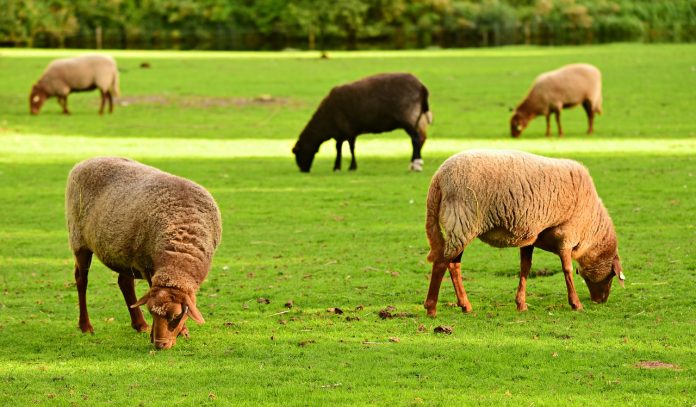Small ruminant animals like sheep and goats have increased in popularity for fairs, as well as a food source during the past decade in eastern Ohio.
This increase in popularity could be attributed to smaller farms, an increased interest in agriculture (part- or full-time) as well as consumer interest in locally grown food.
The reasons for owning small ruminants are unique to individuals, but the benefits of incorporating small ruminants to an operation are numerous and can lead to a shared appreciation of these unique animals among owners.
To begin discussing sheep and goats, remember that goats are browsers and sheep are grazers.
This does not mean that goats will not eat grasses and other forages but they seem to prefer an array and diverse diet of shrubs, forbs and tree leaves mixed with hay and grasses.
Therefore goats can be a great animal to “clear” a weed infested field. They can be chained to small areas and will eat things within their reach.
They are still ruminant animals, so a diet consisting predominantly of roughage is good for the ruminant physiology of the species.
Rumen bacteria
Rumen bacteria are responsible for digesting feed. Rumen bacteria digest feed by attaching to the feed particles and releasing enzymes.
In addition to the bacteria, there are rumen protozoa that engulf (swallow) soluble sugars and starch.
There are also rumen fungi. These fungi are responsible for breaking the lignin-hemicellulose bonds of forages, making more cellulose available to the rumen bacteria.
It is important to keep all these “bugs” in the rumen balanced by maintaining that high fiber diet.
Feeding too much grain, when an animal is accustomed to a forage-based diet, will alter the bacteria/fungi balance in the gut and cause difficulties in acclimating to the change.
Along those lines, abrupt changes in the type of diet or even quality can cause issues that could make the animal sick or even cause death.
Think of it as feeding the bugs in the gut that feed the animal.
Even something as simple as having the animal drink water that is too cold can cause an abrupt stall in the bacterial metabolism that can interfere in this process. (Too cold would be anything below 40 degrees, and this is usually a problem in the winter.)
One way to evaluate your nutritional program is using body condition scores (BCS).
For sheep and goats, BCS usually goes from a 1-5 scale, with 1 being emaciated and 5 being obese.
During lambing and kidding season (spring for most), the score should be at three or slightly above that.
With a score of 3/5, you will have to press down slightly on the lower spine to feel the sharp edge; it should feel full around the spine.
If it is visible or you can feel it with very little pressure, that animal has a score below three.
The problem with this at kidding or lambing is that milk production is very energy demanding and that animal will lose more body condition and make more difficult for her to rebreed.
Ewes at late gestation will have an energy requirement of around 53% total digestible nutrients (TDN) and 9% crude protein (CP); that would be around 0.35lbs or protein to a 130-pound animal assuming a 3% feed to weight intake.
There are times when hay quality is good enough and those values will be expressed on the forage analysis.
On good pasture, that is typically the case, although sometimes supplementation is necessary.
Soybean meal and cottonseed meal both have high CP values: 49% and 46%, respectively, and this a simple way to help boost that protein requirement.
Do not ever forget, BCS is the best tool evaluate your nutritional program for your flock.
Take the extra time to make small changes to your feeding program based on BCS scores to maintain a reliable operation whether you are a small, part-time farmer or a large flock shepherd.













